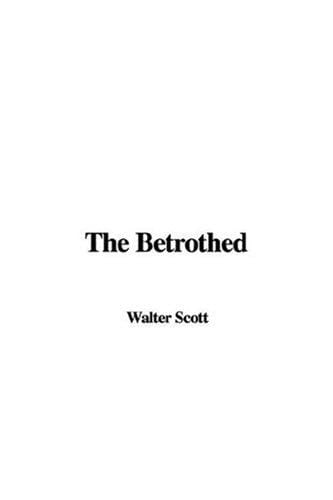The Betrothed: Plot, Themes, and Enduring Influence of Manzoni’s Masterpiece
Explore the plot, themes and modern relevance of Alessandro Manzoni's classic historical novel, The Betrothed, in this concise 800-word overview.

Introduction to The Betrothed
First published in its definitive form in 1842, Alessandro Manzoni’s "The Betrothed" (Italian: "I Promessi Sposi") is widely regarded as the cornerstone of modern Italian literature. Part historical novel, part spiritual quest, it follows two humble lovers as they fight to marry against a backdrop of 17th-century Lombardy upheavals. The book’s sweeping scope, vivid characters, and moral depth have made it required reading in Italy and an influential text across Europe.
Plot Summary
Set in 1628, the novel opens in the village of Lecco where Renzo Tramaglino, a silk-weaver, and Lucia Mondella are preparing to wed. Their plans are thwarted by local tyrant Don Rodrigo, who desires Lucia for himself and intimidates the parish priest, Don Abbondio, into refusing to celebrate the marriage. Forced to flee, the couple seek refuge with compassionate figures such as Father Cristoforo, while also encountering opportunists, mercenaries, and powerful aristocrats.
Renzo travels to Milan, only to be swept up in a bread riot that exposes the city’s fragile social order. Lucia finds sanctuary in a convent, but is later kidnapped at the behest of the villainous Unnamed, a bandit lord tormented by his own conscience. Her faith inspires his dramatic conversion, and she is released. Meanwhile, plague ravages Milan, bringing sinners and saints alike to moments of reckoning. At last, amid the ashes of pestilence and political turmoil, Renzo and Lucia reunite and are married, their perseverance rewarded with a quiet life in a new land.
Historical Context
Manzoni meticulously grounds his fiction in documented history, weaving real events such as the 1628–1630 famine, the German invasion during the Thirty Years’ War, and the devastating plague of 1630 into his narrative. By blending archival research with narrative flair, he pioneers the Italian historical novel and demonstrates how private lives are shaped by collective forces. The novel also served a nationalist purpose; writing during the Risorgimento, Manzoni showcased a shared past and a unified vernacular, helping forge Italian cultural identity.
Major Themes
Providence and Faith
Above all, "The Betrothed" is a meditation on the mystery of divine providence. Characters routinely confront injustice and suffering that seem senseless, yet Manzoni suggests an unseen moral order guiding events toward ultimate good. Father Cristoforo’s counsel—“Dio non turba mai la gioia dei suoi figli se non per prepararne loro una più certa”—encapsulates this theological optimism.
Social Injustice and Abuse of Power
Don Rodrigo’s petty tyranny and the Spanish authorities’ mismanagement reveal a society where the powerless are prey to the whims of the powerful. Manzoni exposes corruption in both secular and ecclesiastical institutions, urging readers to seek reform grounded in charity and justice.
Redemption and Moral Choice
The Unnamed’s conversion exemplifies the possibility of radical change, underscoring Manzoni’s belief in free will and grace. Even the most hardened sinner can choose repentance, suggesting a hopeful vision of human nature.
Literary Style and Innovations
Manzoni’s prose is celebrated for its clarity, irony, and rhythmic cadences that anticipated modern narrative techniques. He alternates panoramic descriptions with intimate interior monologue, creating momentum while probing conscience. His decision to revise the novel into Tuscan-based Italian set a linguistic standard that later writers—from Verga to Calvino—would inherit.
Influence and Legacy
"The Betrothed" inspired luminaries such as Goethe, Tolstoy, and Eliot. In Italy it remains required school reading, spawning countless adaptations, including film, opera, and television miniseries. Its depiction of plague influenced subsequent outbreak literature, providing a template for how societies respond to public health crises—a relevance confirmed during recent pandemics.
Why Read The Betrothed Today?
Beyond its historical import, the novel speaks urgently to modern readers. Its critique of inequality, exploration of personal responsibility, and depiction of community resilience resonate in an age still contending with social unrest and disease. Moreover, Manzoni’s luminous faith in compassion as a catalyst for change offers an antidote to cynicism, reminding us that moral choices—large or small—ripple outward.
Conclusion
Alessandro Manzoni’s "The Betrothed" endures because it marries gripping storytelling with profound reflection on history, morality, and human connection. Whether approached as a romantic adventure, social critique, or spiritual journey, the novel rewards readers with insights that transcend its 17th-century setting. Four centuries on, Renzo and Lucia’s quest for a simple, just life continues to illuminate our own.